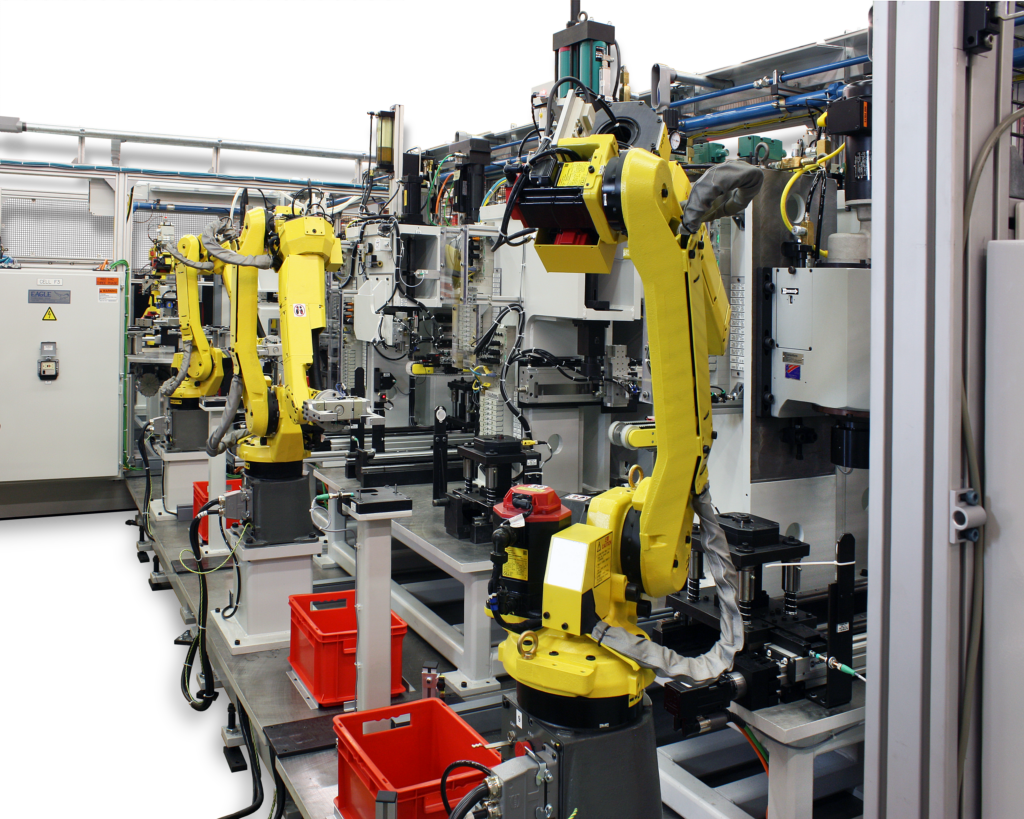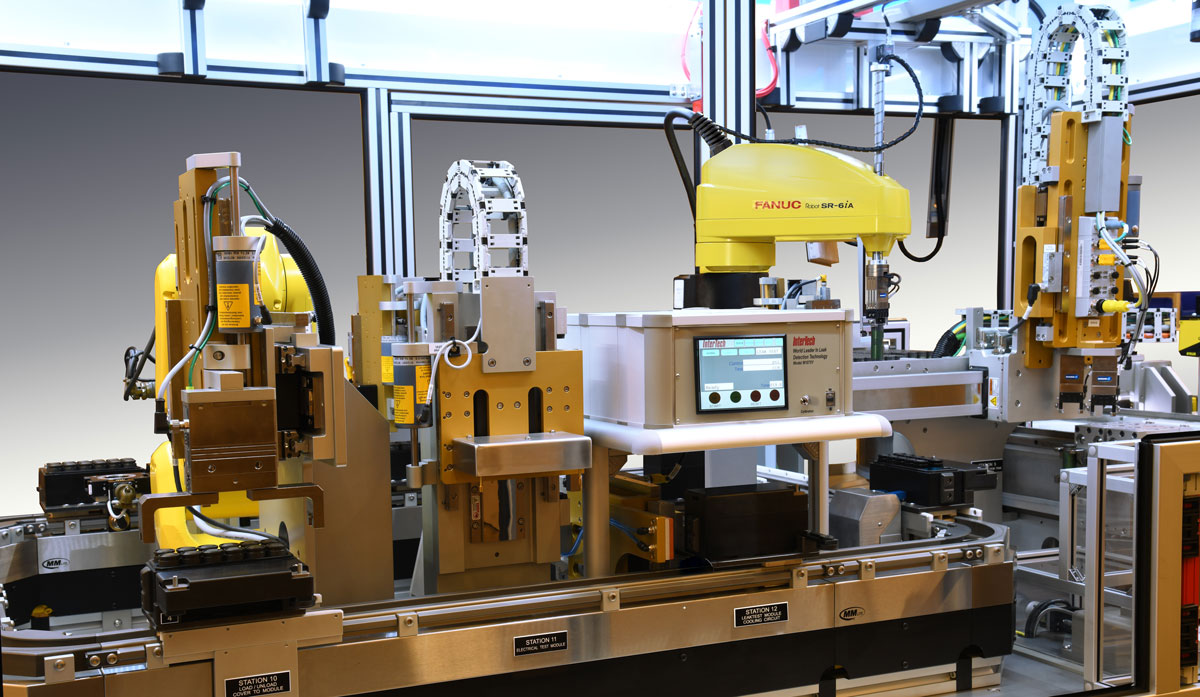Robots can engage in multiple functions at a time, allowing for versatile and cost-saving applications.
For many years, manufacturing automation has focused on hard-coded systems, where components were moved through a series of stations, each with its own specialized task. Each machine performed a very specific sequence of movements designed to advance the manufacturing process to the next step. Although automated and mechanized, these systems weren’t what most of us think of when we hear the word “robot.”
Today’s modern factory robots are also a far cry from the humanoid workers of science fiction. In fact, the sight most familiar to today’s manufacturers are articulated robot arms, equipped with precision sensors, and either a gripper or some other end effector tool. With as many as six axis + of articulation, these robots can handle a range of tasks with precision and delicacy.
Although a more expensive component in initial automation, robots save manufacturers costs over time. Their flexibility and multifunctionality lend themselves to a diverse array of tasks, reducing the total number of components and making them more suitable for future use.
While robots are cost-effective for many reasons, in this article, we’re going to focus on the specific advantages of their multifunctionality and how they benefit manufacturers.

1. Robots can perform multiple quality checks at one station.
In general, factory automation improves product quality by reducing opportunities for human error in the production process. Manufacturers can further improve their product output by designing fool-proof checks into a system using poka-yoke techniques or other quality control fixtures. The number of these fixtures can add up, however, and may introduce extra steps or complications into the validation process.
The good news is that today’s robots are equipped with advanced vision systems that allow them to accurately and efficiently inspect products and spot errors during the assembly process without the need for additional fixtures. By combining a robot with a laser measuring and inspecting device, manufacturers can cut down on the number of quality checks in their system, replacing them with a single robot that can inspect various areas of a part while performing other tasks.
2. Robots can adjust to their environment, instead of preparing the environment for the robot.
For decades, manufacturers have saved costs and increased output by standardizing machine functions. Automated systems often need components to be positioned neatly and evenly in order to perform their set task, and this adjusting and arranging of parts can make certain assemblies more complex and challenging.
Robots, on the other hand, have more range and freedom of movement. They can lift, rotate, and adjust components to be at any angle they need to perform their task. They can also move around an object, and can insert tools into hard-to-reach places, making them ideal for larger assemblies in the automotive or aerospace industries.
3. Robots can be both highly specialized and multifunctional.
Versatility and specialization are often presented as opposing qualities in a tool, and in hard-coded automation, this is often the case. These machines achieve big production outputs because they can perform one task with hyper-efficiency. And, in uses where high volume output is the main focus, these machines are still the right choice.
But robots also boast incredibly high cycle times, often while performing more complex tasks significantly. Furthermore, it is possible to switch out the end effector of a robot during an assembly process, so that a robot moves between a gripper and a welding tool. Eagle recommends tool changers from ATI.
Robots can be equipped with as many end effectors as they need to complete an assembly, and it is usually possible to automate the process as part of the assembly routine. In this way, operators don’t even need to be on the factory floor to change over the robot’s end-effector.
4. Robots can be reprogrammed, allowing for future use within an automated assembly.
Last but not least, unlike fixed manufacturing machines that can only perform a single function, robots can be reprogrammed and redeployed multiple times. This means that, if a product changes, or if a new manufacturing method is developed, robots can be adjusted to meet the new requirements.
This makes robots a much more stable investment for future automation needs. While many manufacturers will still get more than enough use out of fixed machinery, converting those processes which can be converted over to robotic systems will leave them with a tool that can continue providing value for decades to come.

Advanced robotic systems are an investment, but they also position manufacturers for future growth.
In short, robots aren’t the machines of the future—they’re a critical automation solution for the present day. Manufacturers who use this technology in their automation systems will gain a valuable automation resource that can equip them to face new challenges in the years to come.
However, manufacturers don’t need to wait years to see the benefits of using robots in their manufacturing processes. In fact, given their ability to reduce the number of machines needed to complete a task by performing multiple functions at once, manufacturers should expect to see a quick return on their investment.
If you are looking for automated solutions to your manufacturing challenges, contact Eagle today. We can use our expertise in designing factory automation to help you identify the right automation technologies for your application. Contact us today to get started.
Brandon Fuller | b.fuller@EagleTechnologies.com
Eagle Technologies, headquarters in Bridgman, MI
Eagle builds the machines that automate manufacturing. From high-tech robotics to advanced product testing capabilities, Eagle offers end-to-end manufacturing solutions for every industry.


